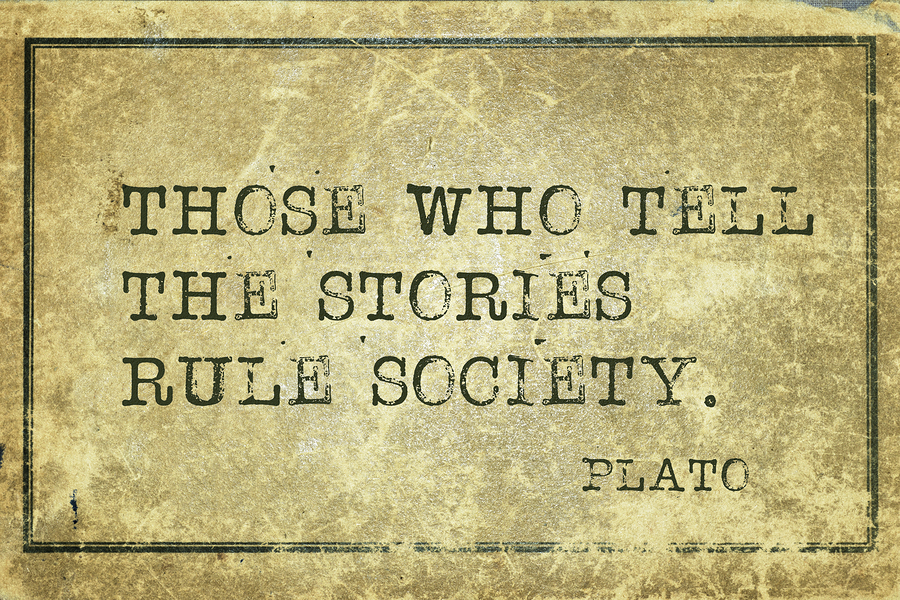
How to Build Your Brand’s Tellable Tale
October 20th, 2017 Posted by Emergent brand marketing, brand strategy, branded content, Consumer insight, Social community, Social media, storytelling 0 comments on “How to Build Your Brand’s Tellable Tale”The formula for brand stories that drive engagement
Marketers are living in the age of consumer control – of the conversation, of granting access, of the genesis of any relationship that may exist between a brand and its users. For this reason, relevance has become a watchword to define what separates real engagement with people from that of disinterest and disconnection.
Relevance always begins with a deep understanding of the consumer’s lifestyle interests and passions, their concerns, needs and desires. It is here, in alignment with what people care about, that brands can find mutually beneficial ground to create conversation. We’ve described this as engaging via help over hype.
To activate relevance, brand stewards must think differently about the relationship dynamics with consumers. It’s hard to move away from the usual transactional behavior and messaging – unless – you really embrace caring about the people you wish to win as customers. You must commit to deep understanding of how the brand sits in service of improving people’s lives –and not just in terms of delivering on product benefits.
Tactically, nowhere is this seen in greater relief than through building communities of brand participants and ambassadors. Social platforms enable interested groups and fan communities to join together. These communities are powerful forces. There’s simply no better way to win new customers than to have current true believers share with others what they love about the brand – it’s the ultimate testimonial.
However in doing so, there are some rules which must be respected: this is not a channel to push out self-serving sales messages. Instead, it is the land of relevance and creating connection – to people’s lives, to each other, to community and sharing.
What’s at stake? There are two types of brands: those that matter and in which the consumer becomes invested, and those that don’t where products are viewed as commodities bought on price – easily interchanged with other options on any given day. The former is a way of becoming embedded in the hearts and minds of consumers through community and engagement, while the latter bypasses this approach in favor of talking “at” people.
Building brand engagement through story
Forming relationships is first and foremost a storytelling mission. Either those shared by brands or those created by consumers.
Have you ever noticed the stark contrast between brand communication that feels like informing, educating and honest conversation, as opposed to a message that looks like marketing and is designed to persuade?
“People influence people. A trusted referral influences people more than the best broadcast message.” Mark Zuckerberg
The tellable tale by definition is useful, valuable communication the consumer wants to share. All too often brand social channels are preoccupied with using the medium as another platform to push selling messages out the door. Which is vastly different than respecting the sharing and conversational aspects of the environment.
Here are six steps for brands to create compelling tellable tales:
- Feature real-people stories – activate the compelling real people customer tales of change, improvement, transformation and delight earned by brands who work to enhance the lives of their users.
- Demonstrate beliefs and mission – people want to be part of something greater than themselves. It is imperative that brands fully embrace a relevant ‘higher purpose’ that guides brand/company behaviors and decisions. A real, human, useful purpose beyond fueling product transactions.
- Transparency rules the relationship – people want to know about the commitments and standards you follow that govern how you do business. Integrity and honesty are critical to establishing connections with consumers.
- Go behind the curtain – companies, intentionally or not, are often like black boxes that operate behind a closed door. Now, however, people want to know how products are created, where ingredients are sourced, how employees and suppliers are treated. Open the door and let them in.
- Humanize your brand – bring to life the people who create, innovate, build and personify the company’s beliefs and mission. Tell their stories. Let them explain in their own words why the company is operating in the consumer’s best interests and how the business works to improve people’s lives.
- Entertain along the way – as the great David Ogilvy once said, “you cannot bore the customer into buying your product.” Entertaining communication allows elements of fun, humor and excitement to filter into the construction of content. Make it interesting, engaging and emotional, as well as informative.
Finally, encourage your fan community to co-create and build content of their own. Nothing is more powerful or compelling than this form of outreach. Be an enabler of social sharing. Encourage customers to contribute. Make it easy to do that. Repurpose what they make and distribute widely.
The 80/20 rule is usually in effect across most product categories, meaning that a smaller population of heavy users are most likely also to be the fans who help tell your story and carry the message. Take care of them!
Looking for more food for thought? Subscribe to our blog.
Bob Wheatley is the CEO of Chicago-based Emergent, the healthy living agency. Emergent provides integrated brand strategy, communications and insight solutions to national food, beverage, home and lifestyle companies. Emergent’s unique and proprietary transformation and growth focus helps organizations navigate, engage and leverage consumers’ desire for higher quality, healthier product or service experiences that mirror their desire for higher quality lifestyles. For more information, contact [email protected] and follow on Twitter @BobWheatley.




